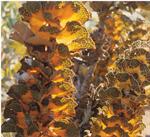 Study Australian Indigenous Plants
Study Australian Indigenous Plants
Learn to Identify and Grow Australian Plants anywhere in the World.
Develop your ability to identify, select, cultivate and plan a
management program, for appropriate varieties of Australian native
plants, in a wide variety of situations; become an expert in this field.
Australia has one of the oldest and most diverse varieties of
plants of any country. Australian natives come from tropical areas to
cold temperate snow covered mountains, and from inland deserts to
fertile wet rainforests.
- Learn to identify, propagate and grow dozens of different genera
- Work with Natives in a nursery, flower farm, landscape business or garden
- Start your own business or enhance your career opportunities working for someone else
- Indulge a passion for natives, breed new varieties, understand wonders of the Australian bush which you may have previously not noticed
Content
There are nine lessons in this course, as follows:
1. Introduction
- Scope and Nature of Native Plants
- Taxonomy: Botanical and Horticultural Nomenclature
- Binomial System
- Levels of Division
- Plant Families
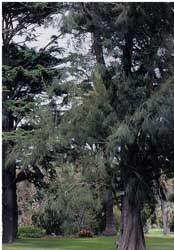 Species, Hybrids, Varieties and Cultivars
Species, Hybrids, Varieties and Cultivars- Botanical Keys and their Use
- Origins of Australian Plants
- Continental Drift
- Resources for More Information
- Sources for Seed Information
2. Cultural Techniques
- Cultivation
- Things that can Go Wrong: Pests, Diseases, Environmental Problems, Nutrition
- Soils
- Improving Soil Structure
- Soil Water Management
Compost
- No Dig Growing Techniques
- Feeding Natives
- Pruning
- Temperature
- Planting, Staking, Mulching
- Special Planting Techniques
- Natives for Shade
- Controlling Weeds
- Propagation; seed, cuttings, etc
- Stock Plants
3. Eucalypts
- Introduction
- Types of Eucalypts; gums, stringybarks, boxes, ironbarks, yates, peppermints, etc.
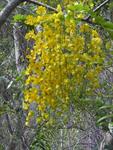 Hybrid Eucalypts
Hybrid Eucalypts- Eucalypt Cultural Requirements
- Review of Important Eucalypt Species
4. Native Trees
- Casuarina; Casuarina and Allocasuarina, Gymnostoma and Ceuthostoma
- Casuarina Culture
- Review of Casuarina and Allocasuarina species
- Australian Conifers: Overview
- Cupressaceae: Actinostrobus, Calitris, Diselma
- Araucariaceae; Araucaria
- Podocarpaceae; Dacrydium, Microcachrys, Microstrobos, Phyllocladus, Podocarpus
- Taxodiaceae:
- Macadamias
- Brachychiton
- Angophora
- Lophostemon
5. Acacias
- Introduction to Legumes; Papilionoideae, Caesalpiniodeae and Mimosoideae
- Overview of Acacia
- Acacia Cultural Requirements
- Review of Important Acacia species
- Elements of drawing a Landscape Plan
- Landscape Design Procedure
6. Myrtaceous Australian Plants
- Review of the Myrtaceae Family
- Callistemon overview
- Callistemon Culture
- Important Callistemon cultivars and species
- Leptospermum overview and Culture
- Important Leptospermum Species
- Baeckea
- Calothamnus
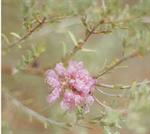 Calytrix
Calytrix- Eugenia
- Homoranthus
- Kunzea
- Melaleuca
- Micromyrtus
- Scholtzia
- Syzygium
- Verticordia
- Thryptomene
7. Grevilleas
- Grevillea Overview
- Types of flower: Erect Cluster, Toothbrush, Pendant, Cylinder
- McCilveray’s Classification into eleven main groups
- Flower and Leaf Terminology
- Review of Low Growing Grevilleas
- Banksia Type Hybrids
- Hybrid Parents from tropics and sub tropics
- Poorinda Hybrids
- Review of many Important Species
- Grevillea Culture
- Related Proteaceae Natives: Dryandra, Hakea, Banksia, Telopea
8. Ground Cover and Small Shrubs
9. Commercial Applications
- Fragrant Natives
- Uses for Eucalyptus
- Uses for Grevilleas
- Uses for Acacia: timber, tanning, cut flowers, food, etc
- Aboriginal Uses for Acacias
- Growing Natives in Containers
- Bush Tucker
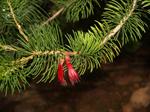 What The Course Covers
What The Course Covers
Here are some of the course aims:
- Classify most significant cultivated native plants, to the family level.
- Determine cultural practices to maintain healthy native plants.
- Explain the identification and culture of eucalypts in your locality.
- Explain the identification and culture of native trees.
- Explain the identification and culture of acacias in your locality.
- Explain the identification and culture of native shrubs, including species of Acacia, Melaleuca, Callistemon and Leptospermum
- Explain the identification and culture of different Proteaceous native plants, with particular emphasis on the genus Grevillea.
- Explain the identification and culture of a range of Australian Native ground covers and
- small shrubs.
- Determine commercially viable applications for different native plants.
- Compile a series of plant reviews with information on each plant variety, such as:
- Common Name
- Plant Family, Genus and Species names
- Variety (if applicable)
- Height
- Width
- Soil requirements
- Environmental requirements
- Cultural procedures (eg. propagation and pruning)
- Pest and disease susceptibility
Duration: 100 hours
WHO CAN BENEFIT FROM THIS COURSE?
- Nursery owners and workers
- Australian native flower farm owner or worker
- Landscape designer or gardeners
- Those who would like to start an Australian natives business or enhance their career opportunities working for someone else
- Workers in public parks and gardens or those aspiring to work in parks
- Workers in environmental rehabilitation or those aspiring to work with improving the environment